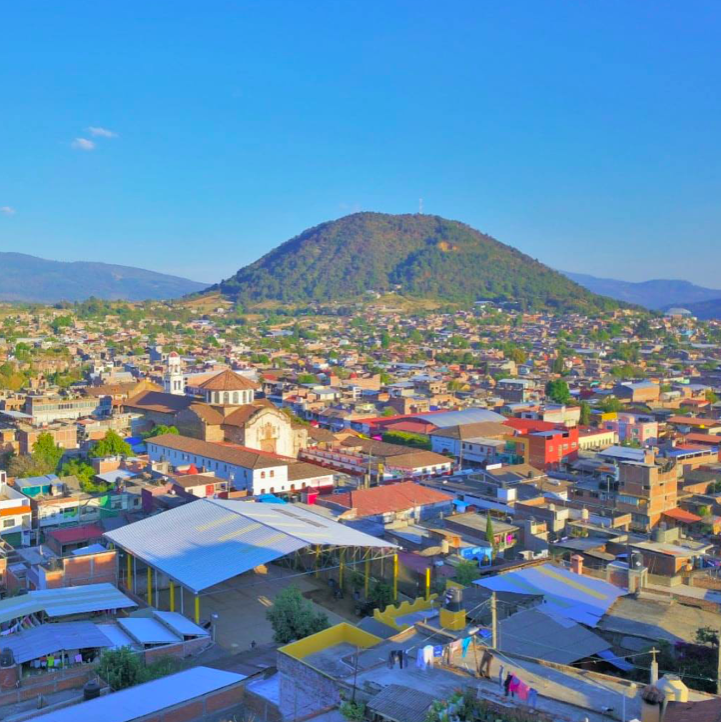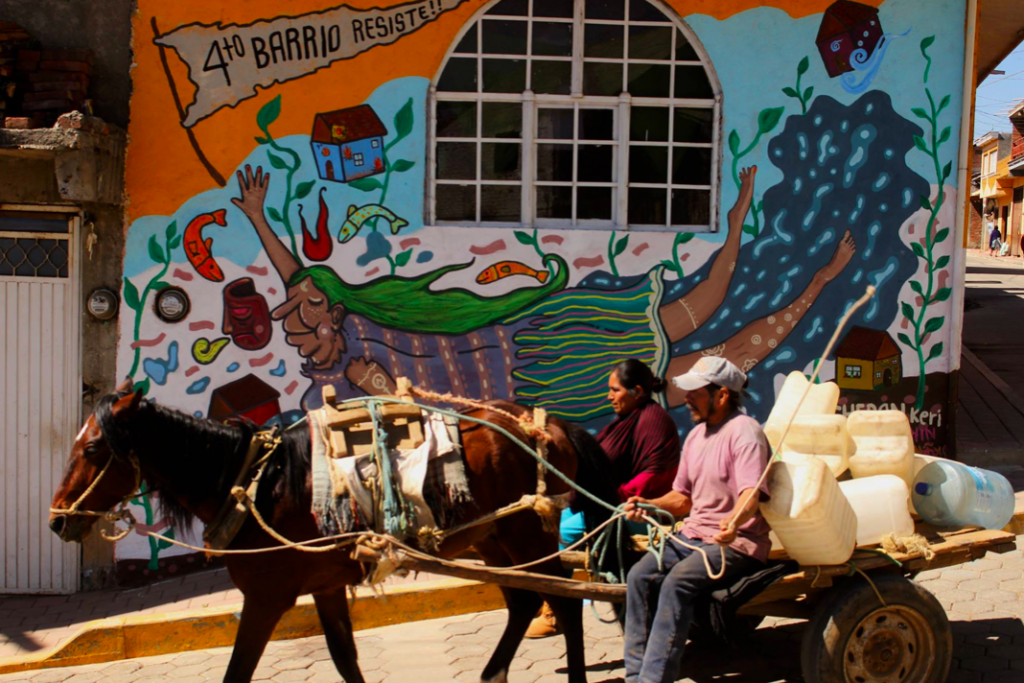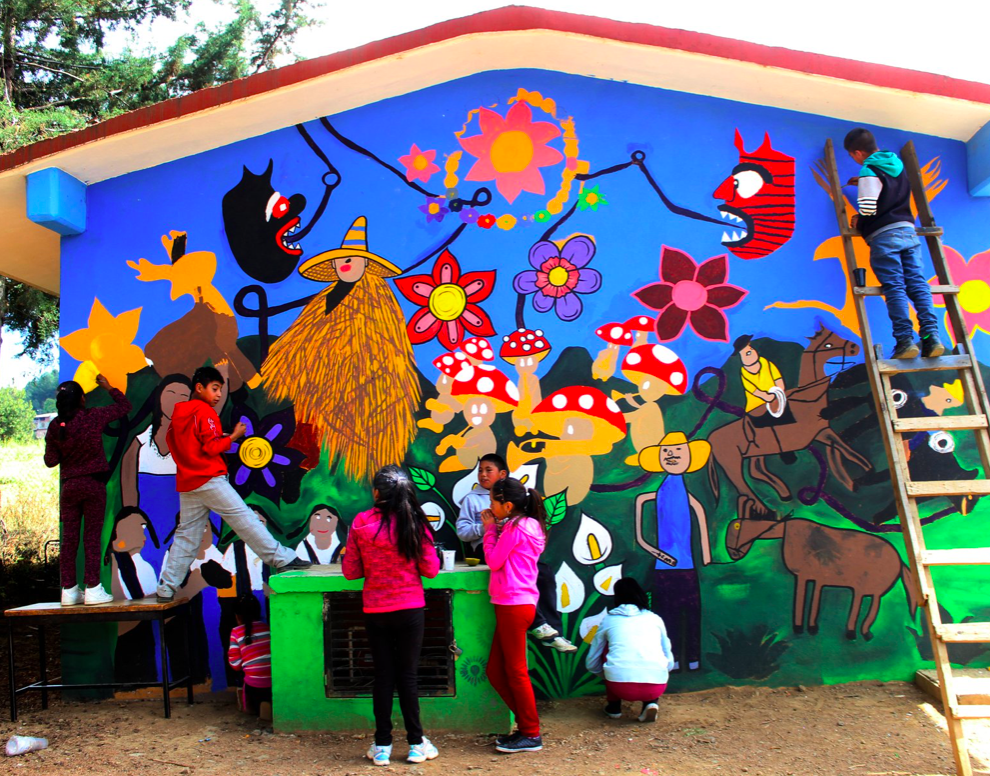A blog from the winner of the Visions on Peace master thesis prize 2020, Ana Gabriela Rojo Fierro, about her research in Mexico.
“Probably of all our feelings the only one that is not truly ours is hope. Hope belongs to life, it is life itself defending itself” – Julio Cortázar.
There is a town, a town with all types of houses, big and small, old and new. Some with red tiles and purple bougainvilleas, some painted yellow, blue or white, and others that join red and white in the way that is common across many towns in Mexico. There is not necessarily something about this town that would immediately announce the unusual and extraordinary story that has unfolded there. Without a careful glance, only the murals could offer a testimony of how this seemingly ordinary town is anything but ordinary.
In 2007 Mexico embarked on a ‘War against drugs’, a strategy that fundamentally relied on military involvement to try to reduce the grasp of criminal organisations in the territory. And yet, over a decade after the onset of this conflict, violence has increased in seemingly unstoppable spirals – the number of cartels has multiplied, impunity has taken hold of the country, and attacks against civilians have led to terrifying numbers of deaths: 227,428[1] lives have been lost and 61,000 people have gone missing[2].
Small, medium or big towns, urban or rural seem to have been equally surrounded and swallowed by an atmosphere of fear, violence, and hopelessness. But the story I want to tell you, the extraordinarily unusual story, is that of a city that managed to overcome it.
Initially affected by violence and victims of criminal groups that destroyed its forests, Cherán, an indigenous P´urhépecha community in the state of Michoacán, central western Mexico, has been the stage of transformation and local peace formation.
Following an uprising in 2011 that was initiated by women, citizens blockaded the town and expelled corrupt politicians and criminal groups that had been terrorising the community. Without government or military protection, and with recently expelled criminal organisations preying on citizens at the outskirts of town, people in Cherán organised. Men, women, the elderly and children – they all participated to try and restore peace to the community. Some patrolled the streets, while others prepared food, shared ideas and stories. During a period of over 9 months, nightly bonfires were lit in every street in Cherán both as a practical means to keep the community safe, but also to give strength and support to one another.
It was during the conversations around the bonfires that people decided they wanted to use their constitutional right and form a government based on indigenous practices and customs. They believed that strengthening P´urhépecha values and having a communitarian approach to decision making would protect them from the high crime rate experienced elsewhere in the country. In 2012, after a referendum with the central government, Cherán elected their first government under a new system, in which power is shared among 12 members of the community (instead of one single mayor). Their new organisation involves strong elements of participatory democracy, where neighbourhood assemblies are a central space for decision-making.
Has it worked? Yes, and with great success – from 2013 until 2017, the percentage of high impact crimes in Cherán was close to zero, which stands in contrast to what the rest of Mexico is experiencing. But how did people in Cherán succeed where decades of government and military action have failed? There are three key reasons that can help explain the success of Cherán.
- Creating trustable institutions and authorities. One of the biggest complaints in Cherán was the fact that they had ‘no one to turn to’ that could help them against criminal organisations – the local government and police often colluded. Now they have worked to create numerous accountability mechanisms and legitimate institutions. For example, political authorities are proposed by neighbours, or members from the police must respond directly to citizens and are removed from office if they neglect their responsibilities.
- Reconnecting among neighbours. As a result, from the fog of violence and fear, citizens were isolated in their homes and disconnected. Having experienced fear together while sitting at the bonfires, sharing food with one another, and nowadays participating in the political decisions, or gathering to paint murals of the uprising, citizens have strengthened the social bond that makes them feel part of a community. In this way, they have a shared sense of responsibility and work together to ensure their safety.
- Recovering their P´urhépecha identity. As time passed, many traditions had been lost in the community, and there was rarely a sense of P´urhépecha pride. Since the uprising, there has been an effort to rescue traditions and communitarian values -such as days of ‘faenas’ or mutual help, using the traditional community ronda as a security force, and reinforcing ancestral respect towards nature. A strong sense of community identity has given people something worth defending and protecting, and P´urhépecha values stand in contrast to those promoted by narco culture.
While this occurred, something else happened in Cherán: people came to believe they have the power to shape their local context. Rather than the hopelessness that is often experienced during conflicts, by recovering small spaces of interaction and engaging with the community, people have regained a sense of hope and agency. They believe in their collective strength to walk, and to keep walking.
“Today we know: hope is more than a port, it is a horizon. A long road that is walked in small steps. Now when we speak in public of the horror we have seen and the pain we have touched, and people ask what we can do, we say that the answer is built on community, in the heat of a bonfire” – Turati & Rea, 2012[3].
[1] Piaggio, A. & Vidwans, P. (2019). The cost and consequences of the war on drugs. Human Rights Foundation. New York, NY.
[2] Wattenbarger, M. (2020, April 24). ‘We’re doing what the government won’t do’. Foreign Policy. Recovered from: https://foreignpolicy.com/2020/04/24/mexico-drug-war-forced-disappearance-victims-families-government/
[3] Turati, M., & Rea, D. (Eds.). (2012). Entre las cenizas: Historias de vida en tiempos de muerte. Sur+ ediciones.




2 Responses to The extraordinary story of Cherán